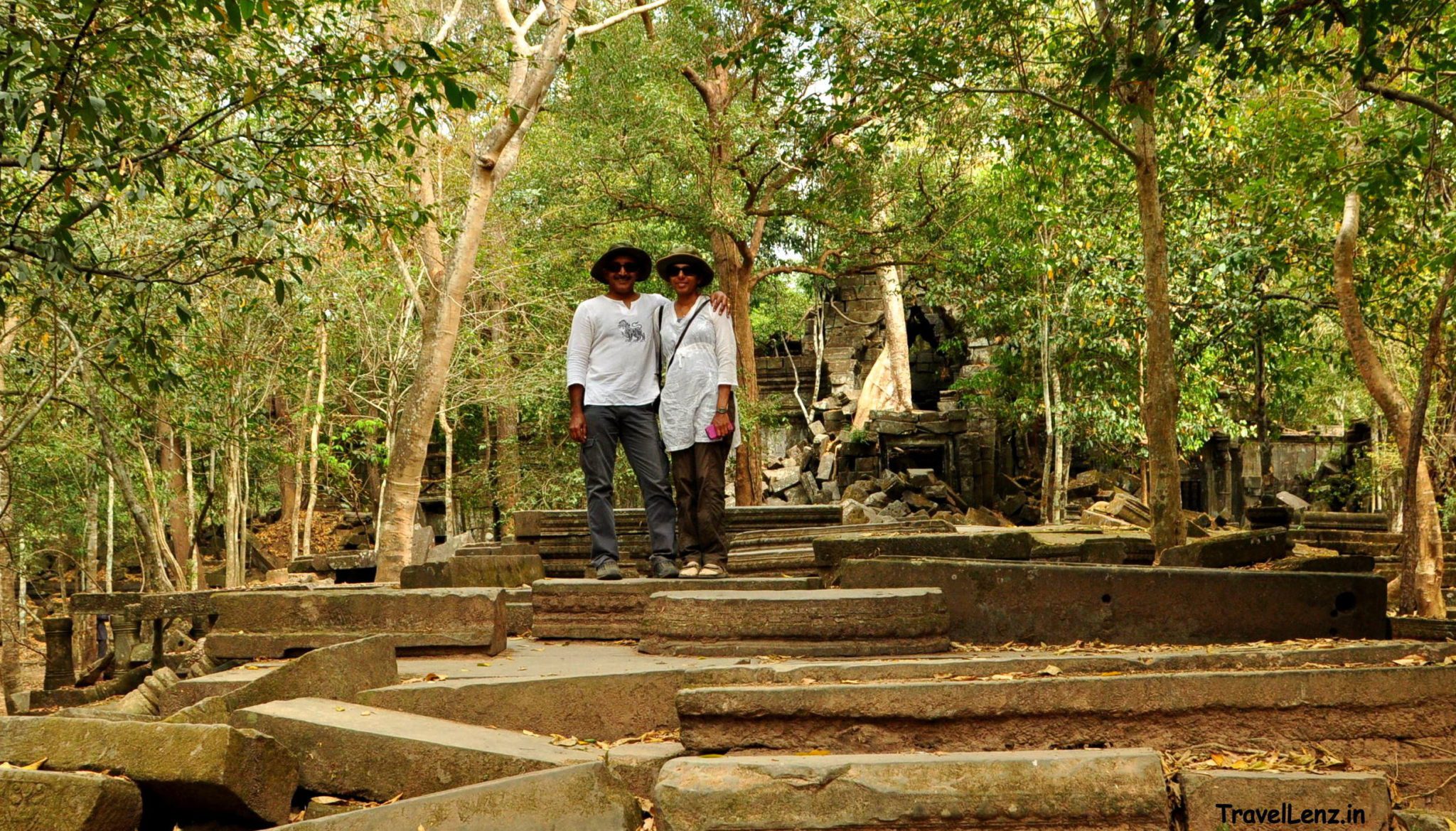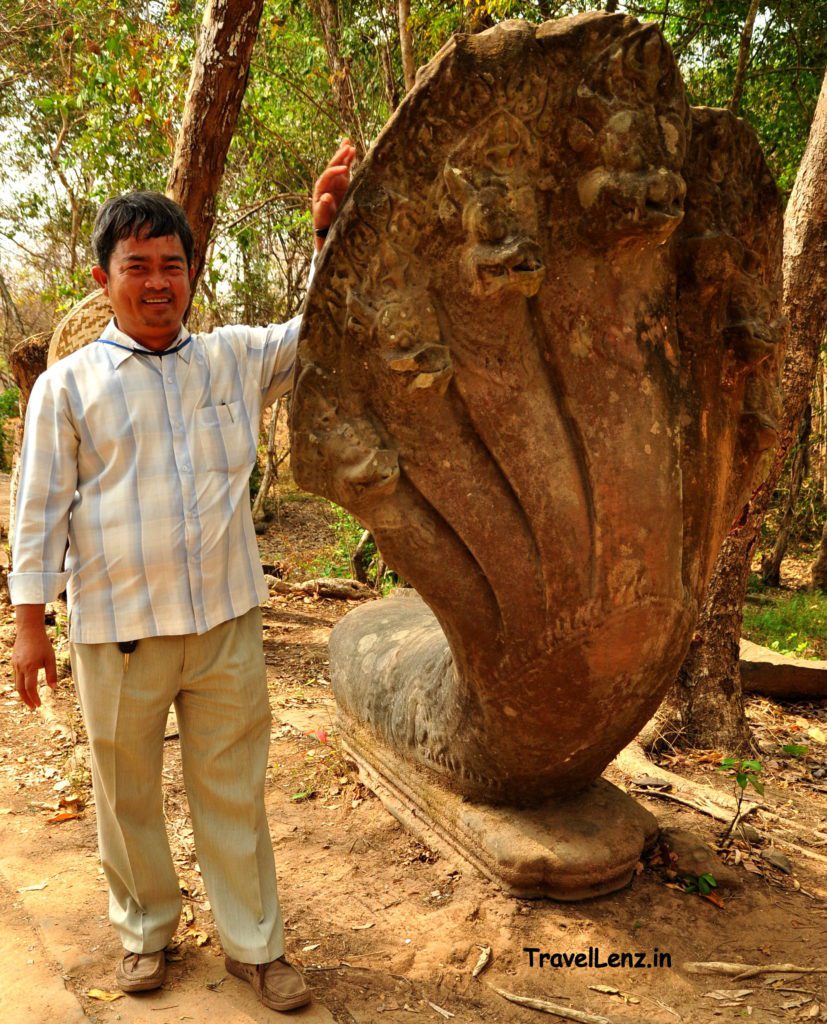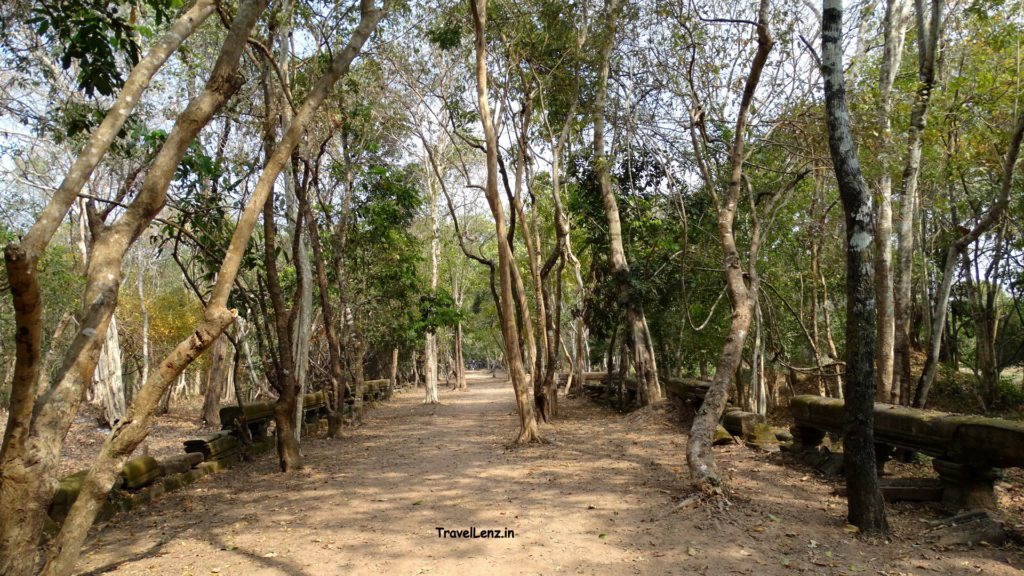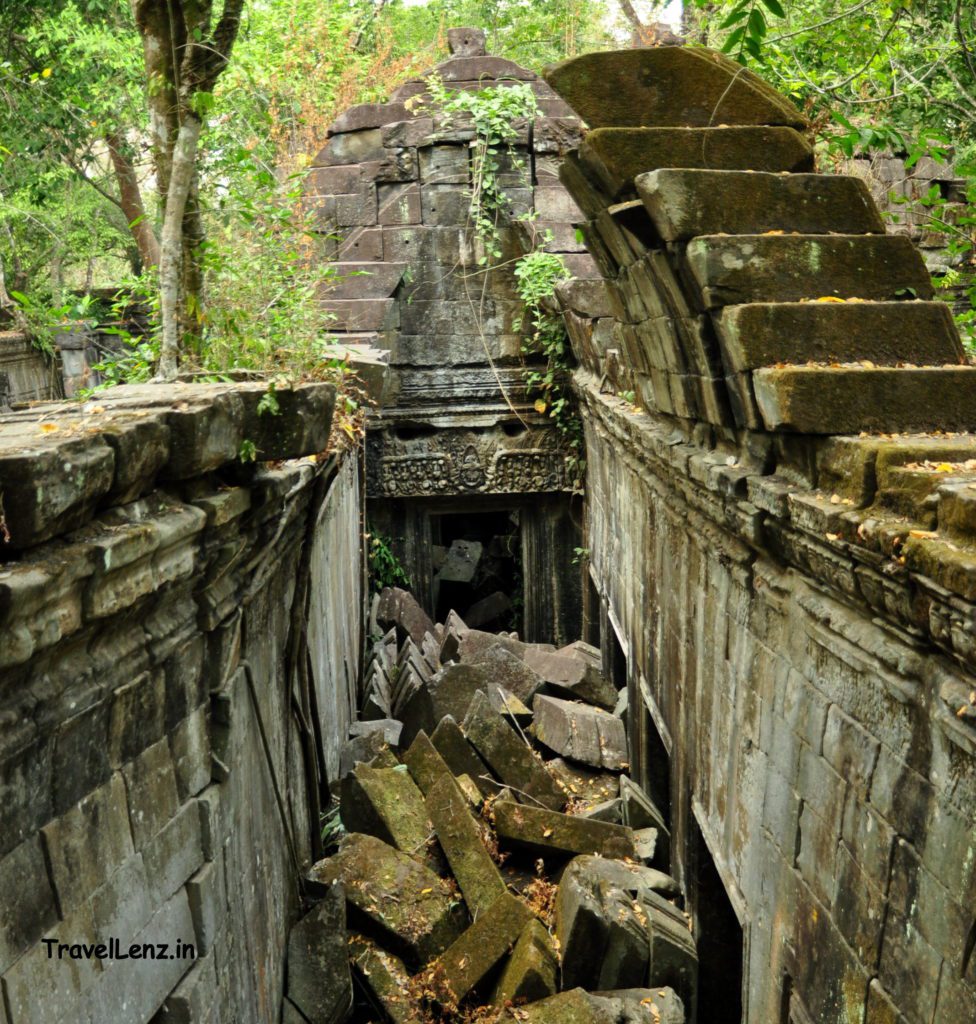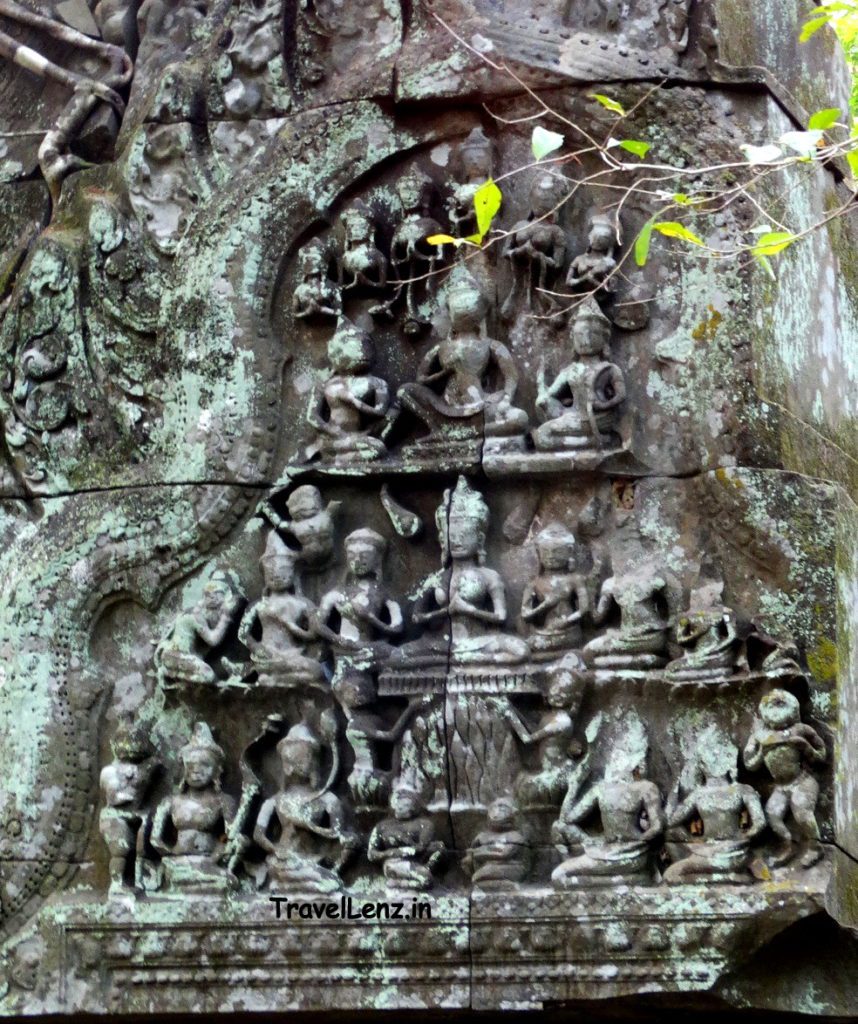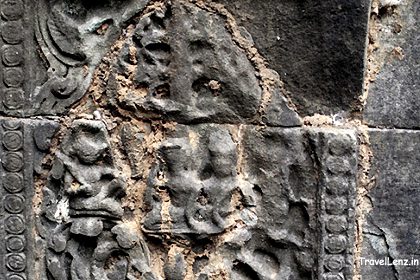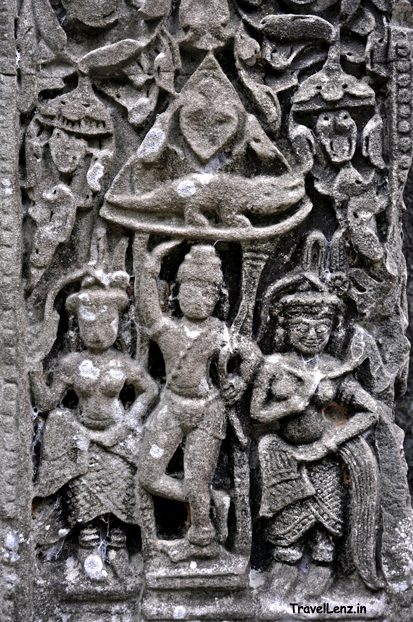Last Updated on May 21, 2021
With Koh Ker behind us, Tes sped us to the final stop of our Angkor exploration – Beng Mealea. It’s a 58 km drive that gives views of the distant Phnom Kulen mountains that was once Mahendraparvata, the first capital of the Angkor civilisation.
Read more: Beyond Angkor – Cambodia’s hidden temples at Koh Ker.
On the road to Beng Mealea
Beyond the dirt roads, endless paddy fields, and stilted homes lay a thick jungle that held treasures and secrets alike. An impressive Reclining Buddha at Preah Ang Thom and the River of the Thousand Lingas at Kbal Spean with intricate carvings from the 9th century AD on its sandstone river bed are just two reasons to venture in there. Tourism there is nowhere near the Angkor Wat zone – partly because of the distance from Siem Reap and also because the area is still not fully clear of landmines left behind by the infamous Khmer Rouge regime.
Sadly, we had to keep the mysteries of Phnom Kulen for another trip. It was Beng Mealea, for now.
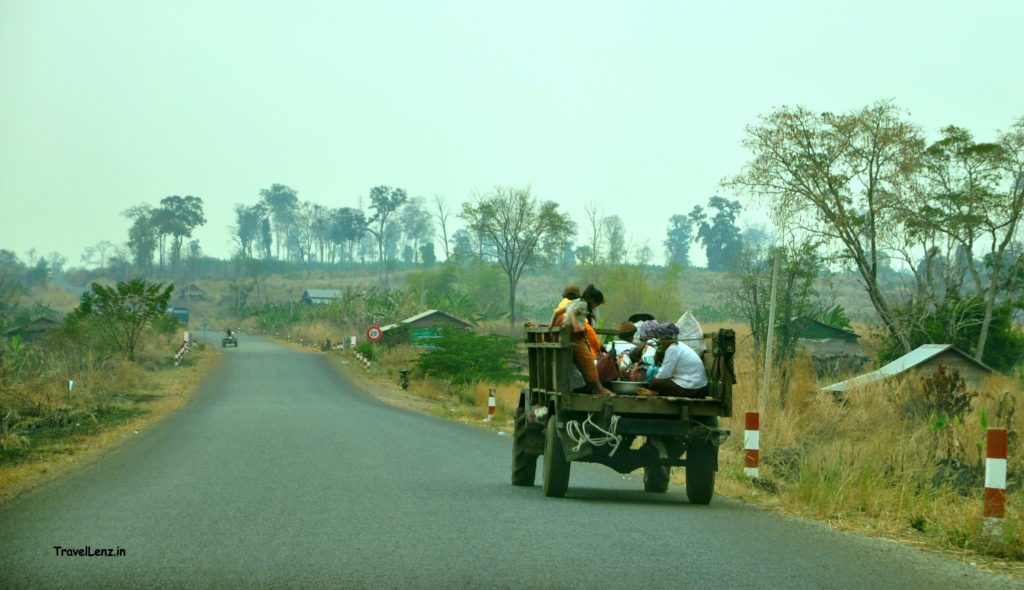
Until a couple of years ago, Beng Mealea was hard to visit with only a dirt road connecting the temple to the main Angkor temple complex. Now, with a properly constructed tarred road, Beng Mealea is an easy hour and a half drive from Siem Reap.
The jungle temple
As we rode through the Cambodian countryside, Tes began to breathe life into this jungle temple. Beng Mealea temple was built in a similar architectural style and layout as that of Angkor Wat, only smaller. Also, Beng Mealea is built on a single flat level and not in the pyramidal temple-mountain style. The galleries do not have many bas-reliefs like the ones found at Angkor Wat. However, like Angkor Wat, this temple once featured three concentric galleries, libraries, a central sanctuary tower, a surrounding moat and lots of lotus ponds. Yes, its Khmer name translates to Lotus Pond.
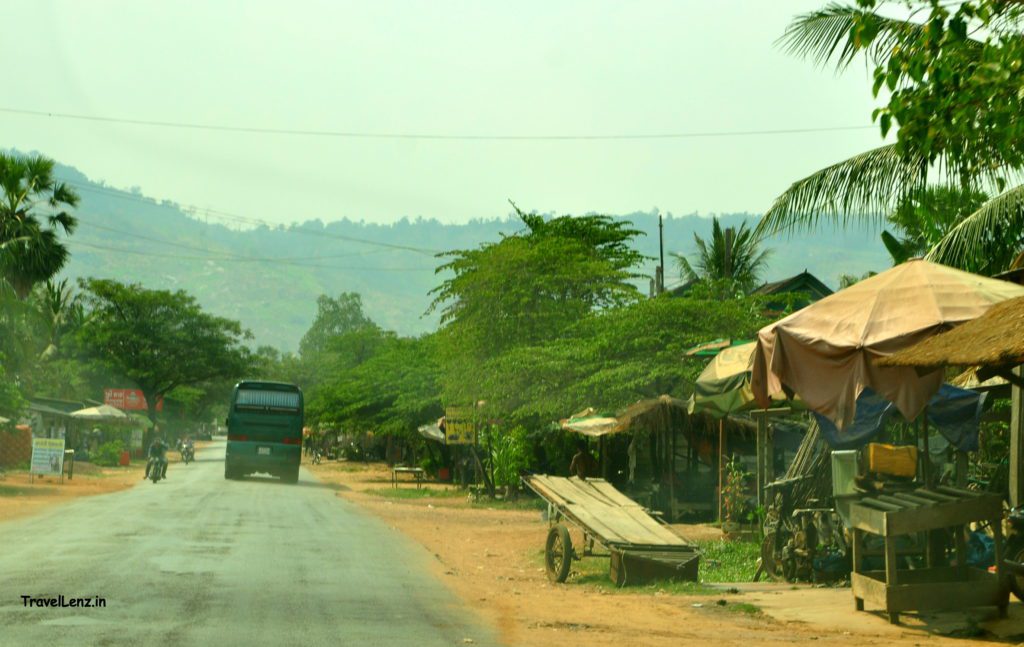
Beng Mealea is one of those Angkor temples that gives a good idea of what the French archeologists must have found when they first arrived in Angkor, Tes said. You mean like Ta Prohm, I asked. Well, wait and see, he added with a gleaming smile.
Read more: Ta Prohm temple – The tomb raider starrer.
The broken Nagas and balustrades
A multi-headed Naga marked the start of a dirt causeway that led to Beng Mealea temple. More Nagas with balustrades were seen along the path – the seven-headed nagas were decorated and had fangs. Most of the Naga heads and balustrades were damaged to some extent, some lay on the floor, some had a few heads missing. The causeway reminded us of the causeway that led to Angkor Wat, except that this had not been restored and was in ruins.
As we walked along the path, we found the moat that surrounded the complex, but it now lay overgrown with weeds.
Read more: Angkor Wat Temple Complex and a Sunset
Stone blocks keep falling down
A pile of collapsed stone blocks stood at the end of the causeway. This used to be one of the gopuras of Beng Mealea, but now reduced to a pile of rubble.
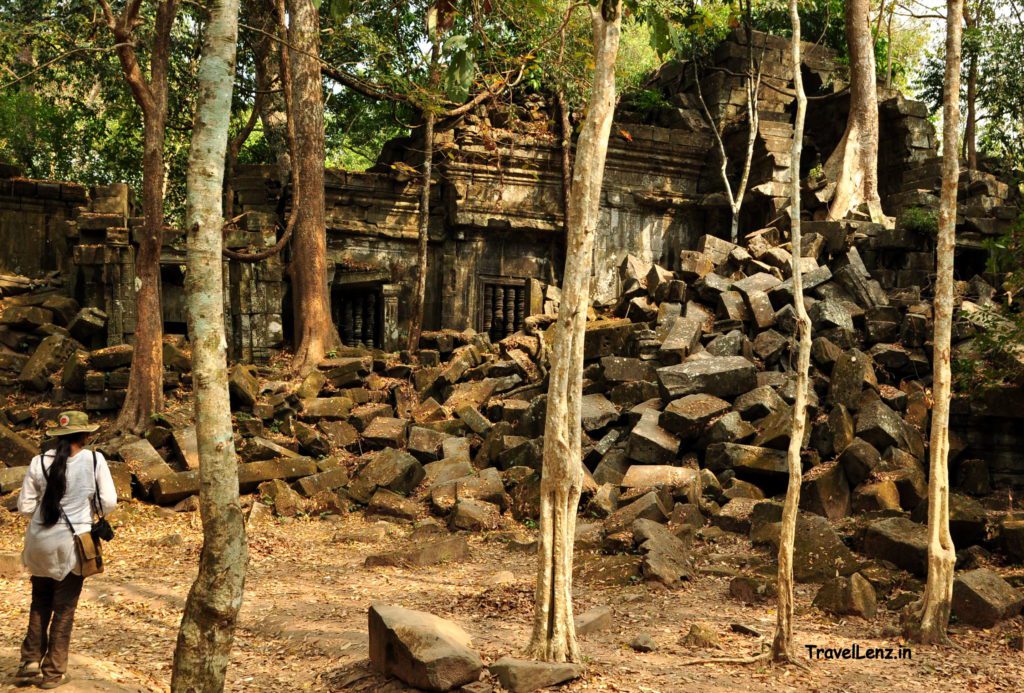
Pairs of feet that belonged to guardian stone lions lay among the fallen Naga heads, moss-covered stone blocks with intricate carvings of Hindu and Buddhist motifs, and pillar columns – it looked as though an earthquake had hit the region, unlike the real reason – the wear and tear of eight odd centuries. Or was it looters?
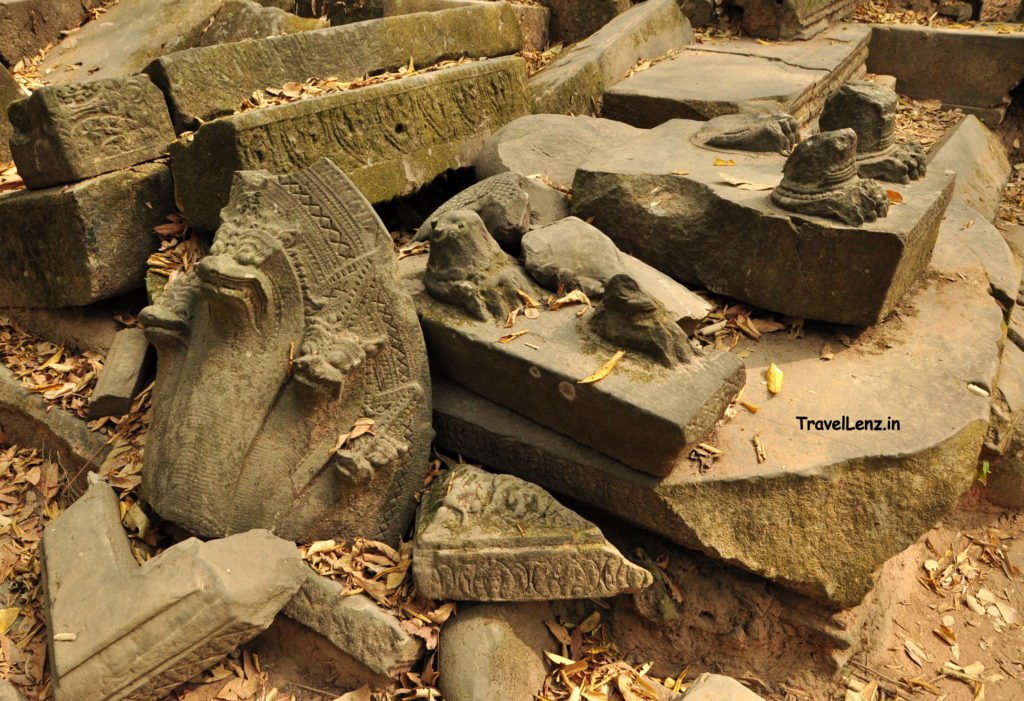
Collapsed galleries and towers, vines and roots of the cotton trees and strangler figs clinging onto the surfaces, apsaras peering out of niches amid the jumbled stones – everything about the temple screamed chaotic but very romantic for all that.
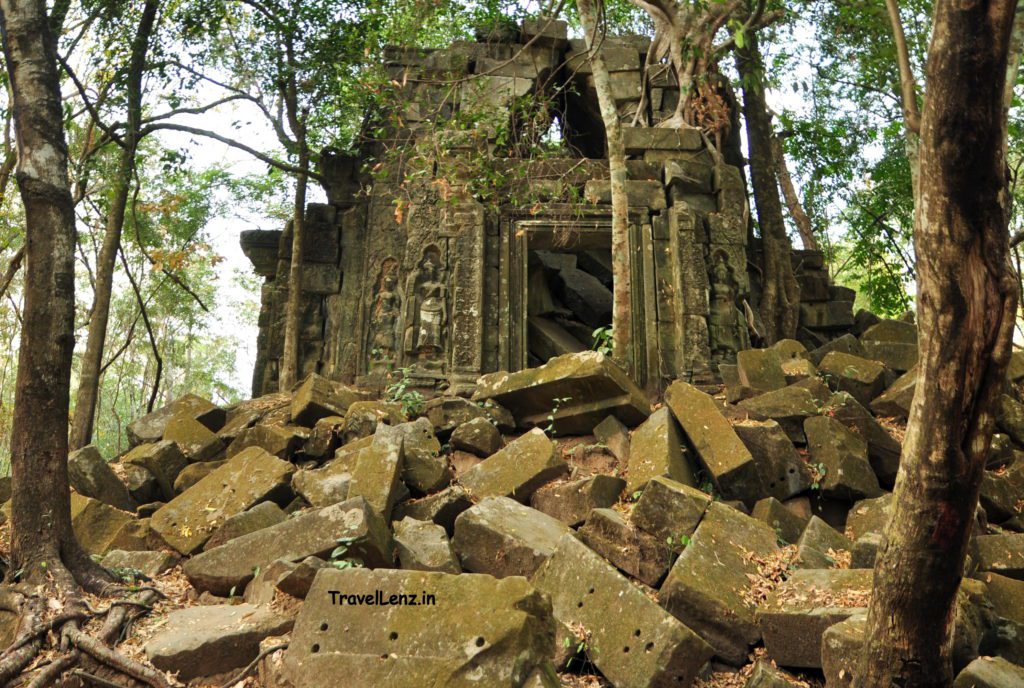
Beng Mealea, unlike Ta Prohm’s controlled wild state where the undergrowth is cut back, is not cleared of vegetation and is a real experience for would-be explorers.
We had to clamber through small spaces, walk along rooftops, crawl over piles of stone blocks that once must have been arching rooftops, intricately carved galleries and towering corridors.
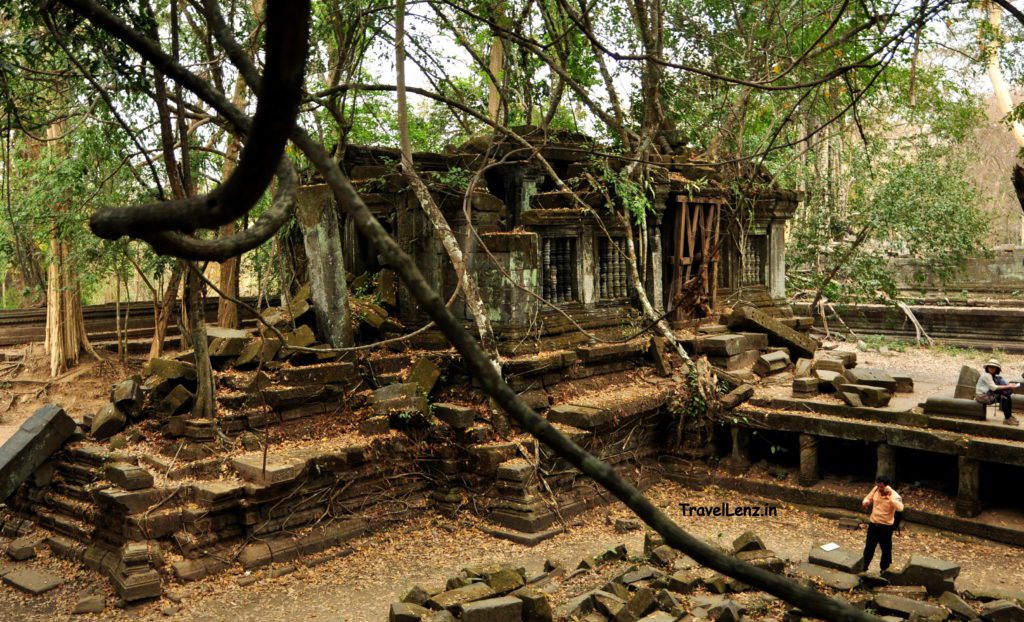
No restoration work had been carried out beyond cutting back the encroaching vegetation. The temple’s central gallery was in ruins, virtually a pit, vines strangled the walls and passages, and tree roots squeezed between the stones.
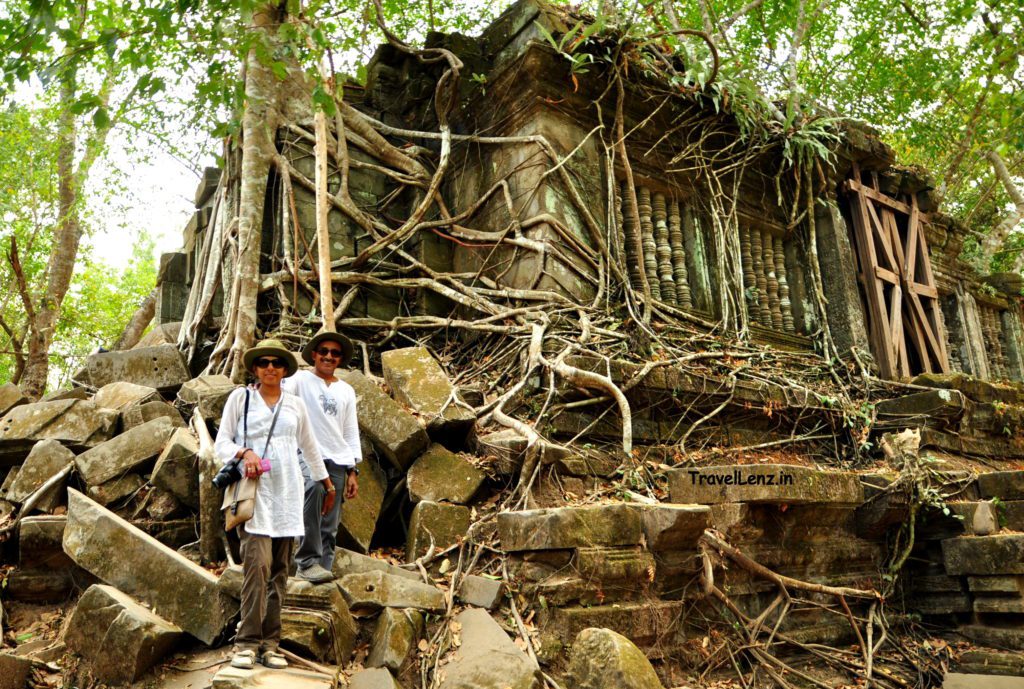
Wooden walkways and handrails
There was a covered gallery that led us through a dark passage to emerge again near the centre of the temple complex. From here, we walked along a narrow wooden walkway which had steps and handrails. The walkway gave us pretty vantage points and access to the central area and parts of the outer galleries.
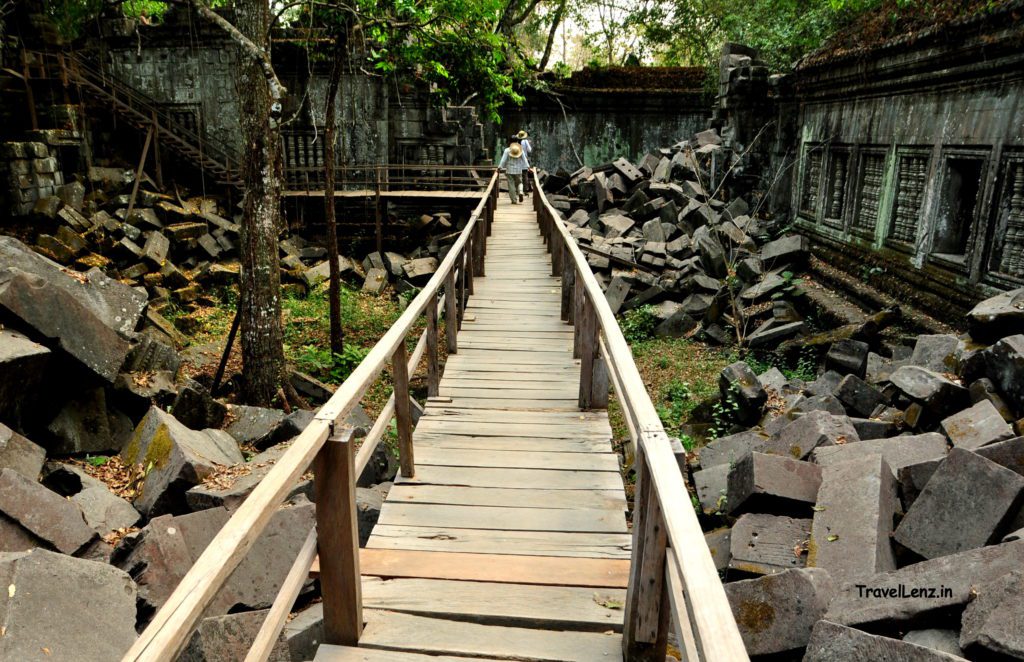
The wooden platform was built for the filming of Two Brothers, a 2004 British-French film directed by Jean-Jacques Annaud starring Guy Pearce, Freddie Highmore and two tiger cubs, set in the 1920s French Indochina.
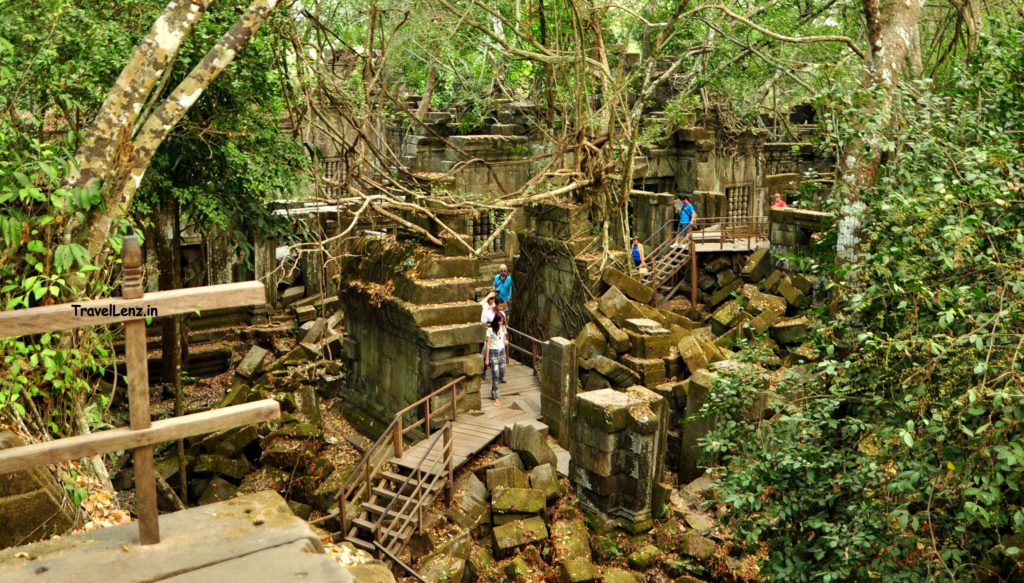
And the carvings
We felt like explorers as we clambered and crawled over toppled stones, occasionally coming across a familiar intricate carving of Hindu or Buddhist motifs in the sandstone blocks. Due to the dilapidated condition of this temple, it was not easy to interpret the reliefs.
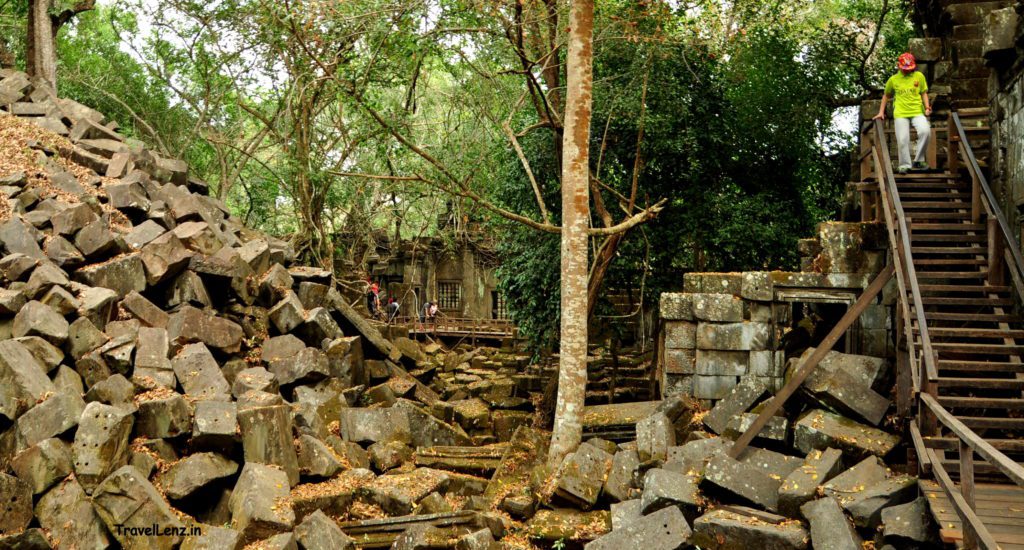
However, amongst the debris, we did find some gems.
Churning of the ocean of milk
A carving depicting the churning of the ocean of milk and the ever-continuing conflict between the Devas and Asuras lay on the ground. It was a miniature version of what we had seen at the gates of Angkor Thom. There were the Devas (Gods) on one side and the Asuras (Demons) on the other side holding onto the Naga King, Vasuki, churning the ocean of milk using Mount Mandara as a whisk. The mythology centers around Lord Vishnu’s second Avatar (incarnation), Kurma (turtle), who bore the mountain on his back.
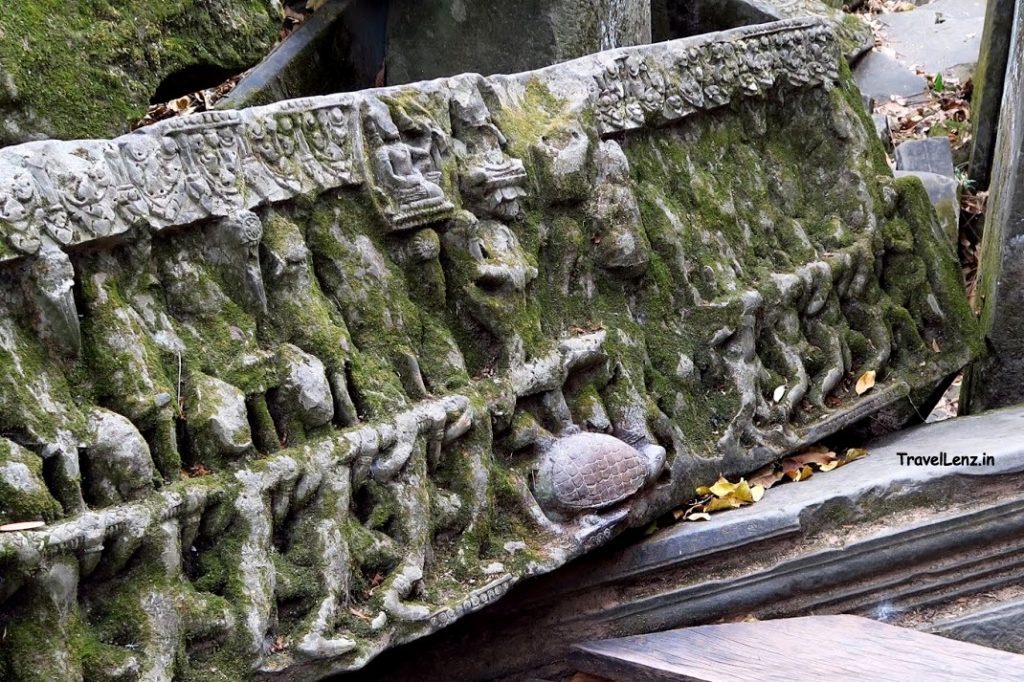
Read more: The South Gate Tower of Angkor Thom
Yama on his mount – an Indian Rhinocerous!!!
Yama is seen here on his mount, which seems to be a ……wait, this looks like a buffalo with a snout. No, it was an Indian Rhinoceros. Yama’s mount in Hindu mythology is usually a buffalo.
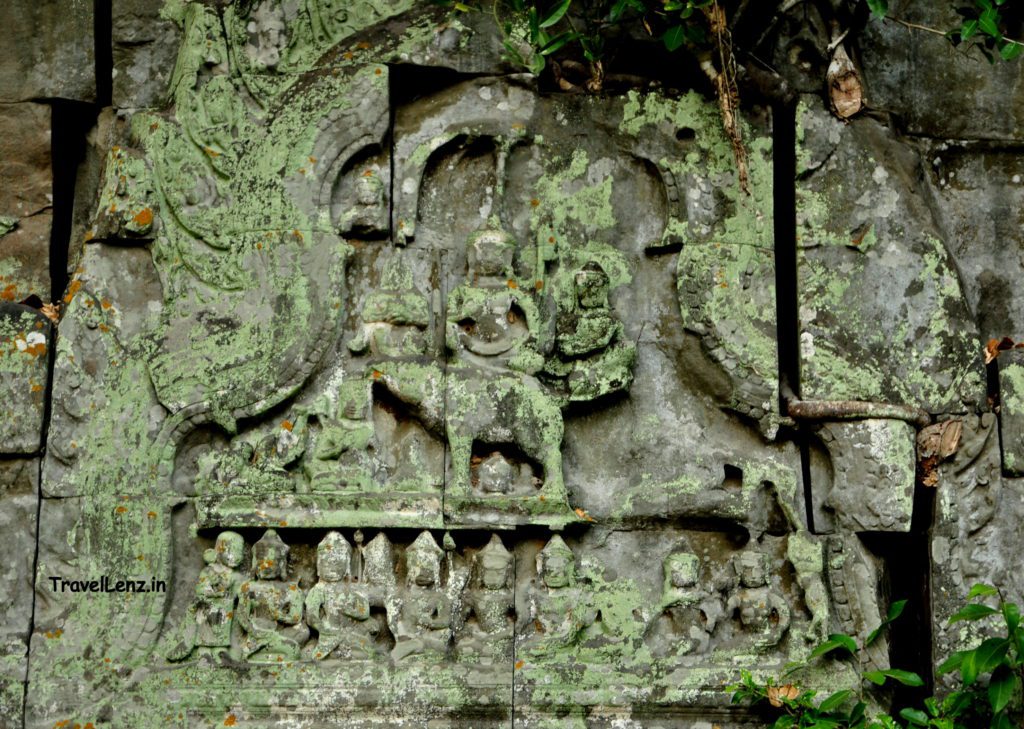
Sita’s fire ordeal
A pediment showing Sita’s Agnipareeksha (fire ordeal) was something that we had not seen anywhere in India. Sita was sitting with joined hands on a throne carried by Devatas. The throne was kept over a pyre. Lord Rama is also seen here flanked by Lakshmana to his right and Hanuman to his left. Sita had to undergo Agnipareeksha to prove her chastity due to her captivity in Ravana’s palace. Eventually, Sita came out of the fire unharmed proving her purity.
Sita in captivity
We also found a stone depicting Sita in captivity. She was kept in a grove called Ashoka Vatika on the island of Lanka, after Ravana, the Demon King had abducted her. Sita is seen under an Ashoka tree, with a couple of Rakshasees (Demonessess) guarding her.
Krishna fighting Bana
Another carving had Krishna fighting the Asura King, Bana. Krishna is seen here on top of Garuda on the left side, fighting with Banasura who is riding on a chariot drawn by lions on the right side. On the top right side in a palace balcony is Usha, Bana’s daughter, and Aniruddha, Krishna’s grandson. The couple were in love which Banasura did not approve and led to the fight.
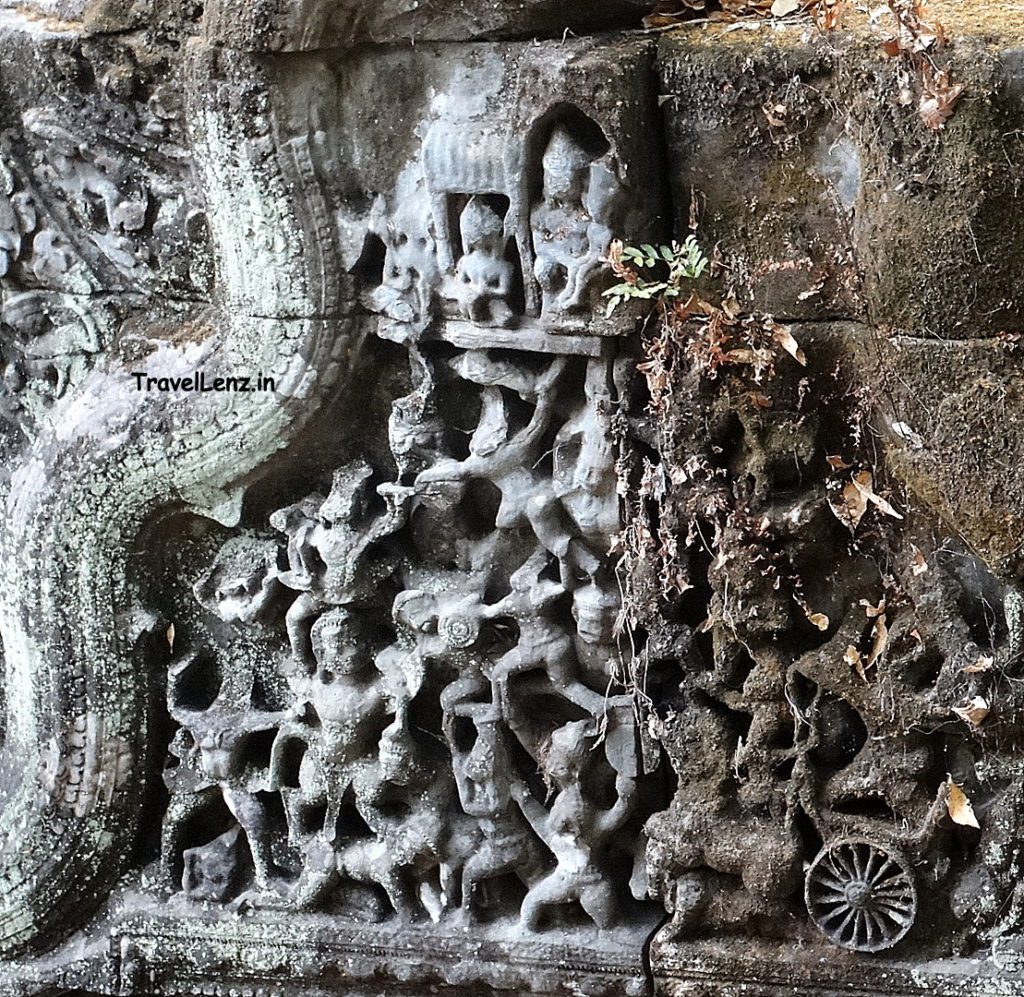
An ascetic meditating under underwater
We found an interesting image showing an ascetic lying underwater and meditating. Tes said that certain scriptures mentioned his name to be Saint Chyavana.
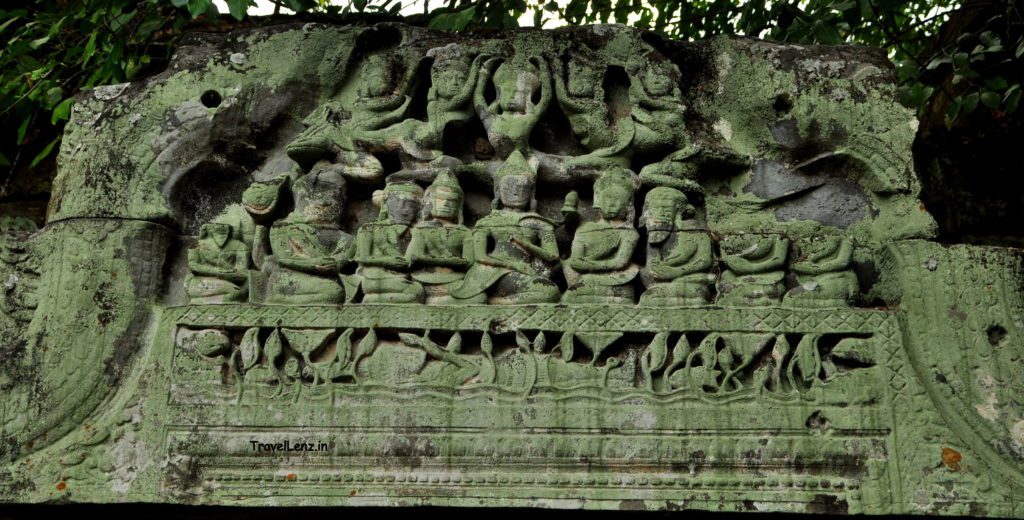
Lord Krishna lifting Mt Govardhana
Lord Krishna lifted Mt Govardhan with his little finger and held it up to protect his people and cattle from the incessant rain.
Time to go back
As we walked back through the rubble, hopping over stones and climbing through windows, holding onto twisted vines for support, we wondered where had all those precious sculptures gone. Buried in the rubble? Or looted and found a place in one of those swanky museums abroad? Nobody knows.

Beng Mealea’s entry fee of USD 5 per person is not included in the Angkor Temple Pass. Tickets can be purchased at a ticket counter at the car park on the way to the site.
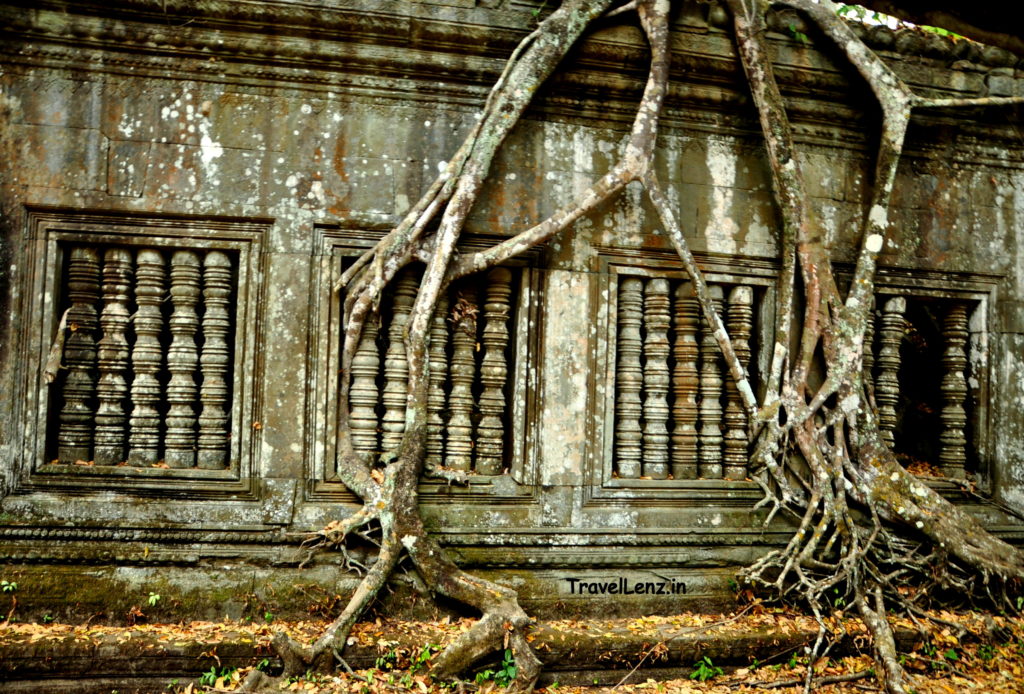
Farewell Cambodia
It was our last day in Siem Reap, and we were flying back to Bangkok the next day. Saying goodbye to a place we’d come to love during our travels and letting go of it is the hardest thing a traveler has to face. It did seem a little silly to be sad while we were having the best time of our life. However, it was time to say Lee hi (goodbye in Khmer) to Cambodia and our wonderful guide, Tes, who elevated our Angkor experiences. He brought in his own knowledge, experience and personal anecdotes which made our Cambodian days very special. The fact that he loves his job makes him the right kind of person to be a tour guide.


